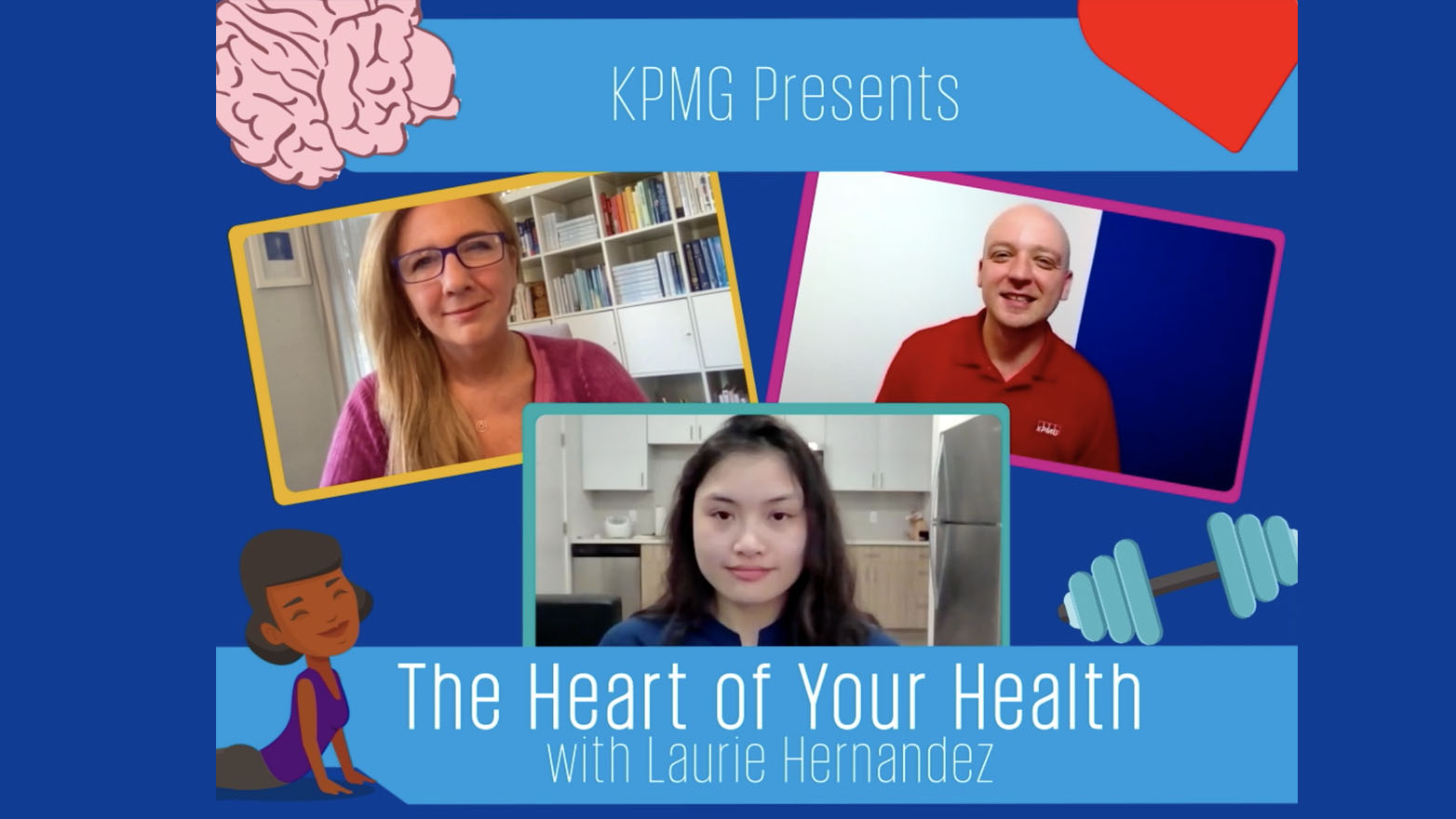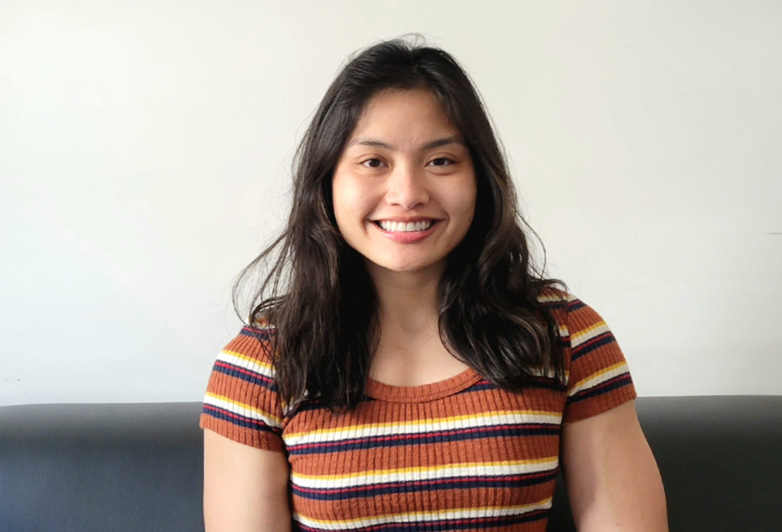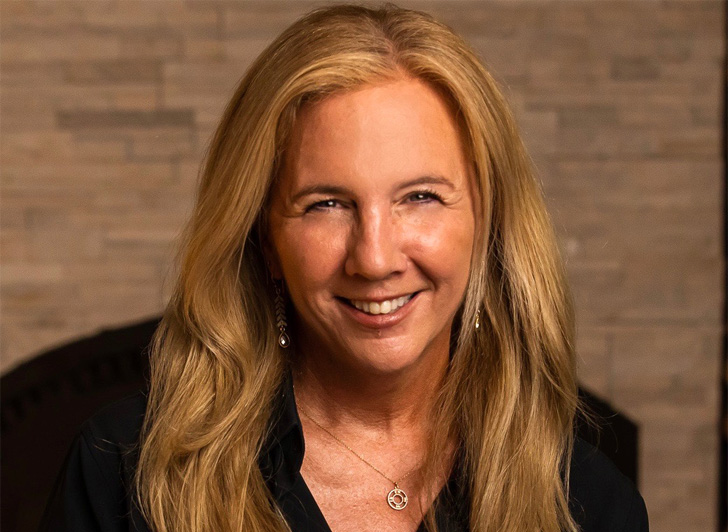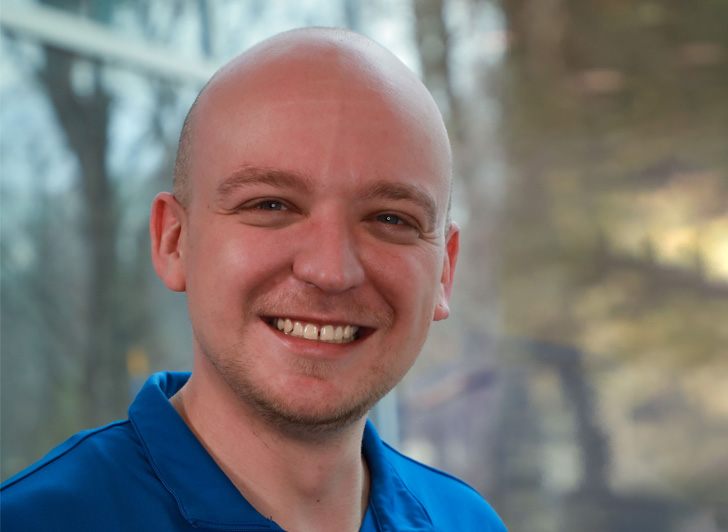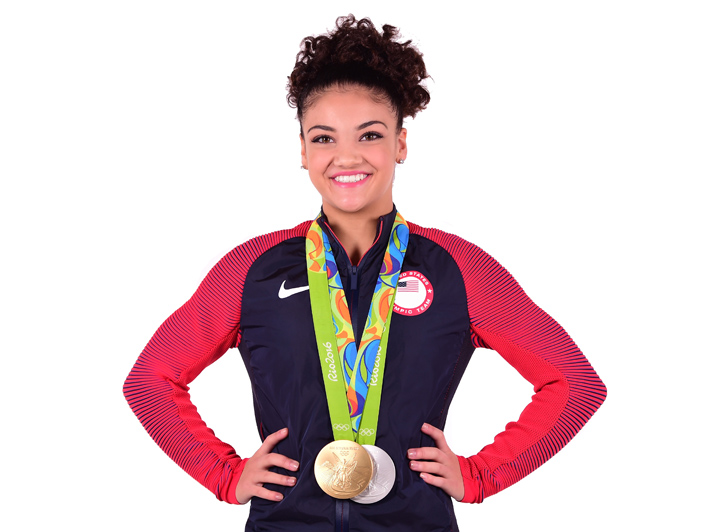Elementary School Students | Video transcript
Laurie Hernandez: The heart is the engine that runs the body. It's what allows your body to function and incredibly important that we keep our heart healthy throughout our lifetimes. Did you know the average person's heart beats about a 100,000 times per day and pumps about 2000 gallons of blood? Crazy, right? The blood pumping throughout your body is what carries the important nutrients and oxygen you need to use your muscles and use your brain. The oxygen comes from the air you breathe and the nutrients come from the food you eat and without the heart and the blood that's in your veins, the oxygen and nutrients would have no way of activating your mind and body. As it turns out, the heart is a muscle that can be strengthened through exercise, just like the muscles in your arms and legs. The stronger the system is the more physical activity you can do without getting tired or low on breath. We will be talking about physical fitness, mental activities, and self-reflection exercises that you can do every day to improve your heart health so you can live a happier and healthier life. Hey there, my name is Laurie Hernandez, I'm an Olympic gold medalist for Team USA. I'd like to take you all on a little journey, one we can learn from and apply in our own lives. Today we will show you how physical fitness, mental health and self-reflection can improve the health of your heart and your body as a whole. This is KPMG Virtual Field Trips. Let's get started. While watching the video, if you'd like to skip to a later section, you can click on the section markers and the video player to jump straight there. Otherwise, we will begin now with physical fitness. The more we move, the easier it gets. That's why athletes who are always training and being active are so good at their sports. But why does this happen? Well, the answer is in your heart. The reason you breathe heavier when you're moving around a lot is because your muscles need more oxygen from your lungs to work at that level. Like we said earlier in the video, the heart pumping blood throughout your body carries that oxygen to your muscles, your heart beats faster to keep up with all your physical activity. And if it's not strong enough, you will run out of energy and get tired. However, this type of exercise is exactly what our heart needs to get stronger, and the more of it you do, the healthier your heart will be. There are some cardio exercises that are good at making your heart strong, such as running, biking and swimming. Being a human is pretty cool because we can do so many different types of physical activities. We can jump like a kangaroo, we can swim like a dolphin and we can run like a cheetah. Cardio is a healthy habit for most animals, but especially humans, and our ability to master these skills is what makes humans so special in the animal kingdom. To talk more about physical fitness, we have the great fortune of welcoming a real Paralympic athlete to our show. Please welcome my friend Yen.
Yen Hoang: Thank you Laurie, I'm excited to be here to answer some of your questions.
Laurie Hernandez: Can you start by explaining what the Paralympics are?
Yen Hoang: The Paralympics are exactly the same as the Olympics but for athletes with disabilities, its definition is actually in the name. So the word para is a Greek preposition that means beside or alongside, meaning the Paralympics are parallel to the Olympics. The Paralympics are usually held two weeks after the Olympics in the same location. Athletes in the Paralympics are classified into different classes based on their disability to ensure fair playing field. The different classes can be divided into five broad categories, athletes who use wheelchairs, amputee athletes, athletes with vision impairment, athletes with cerebral palsy and athletes with intellectual disabilities. And I am a wheelchair athlete.
Laurie Hernandez: What sport do you compete in and how did you start?
Yen Hoang: I do track. Specifically, I race in the 400 meter, 800 meter, 1500 meter and I do some marathons as well. I was inspired to start track at the age of 12 after hearing a speech at my middle school, given by an athlete, the sport was wheelchair rugby at the time.
Laurie Hernandez: Does your physical fitness benefit your life outside of sports?
Yen Hoang: Yes, I absolutely think my physical fitness benefits my life outside of sport. So I do use a manual wheelchair since I can't move or feel my legs. Therefore, when I transfer out of my wheelchair, like onto the bed or couch, I am lifting my entire body with just my arms. But because I work out every day, my upper body is strong and I can easily move my entire body wherever I want to go. So being fit really helps me be independent.
Laurie Hernandez: What advice do you want to give to someone who wants to be more physically active?
Yen Hoang: If you want to become more physically active, my best advice to you is just to start, start today and try to move your body somehow every day.
Laurie Hernandez: Thank you so much for answering our questions Yen, we really appreciate you joining us.
Yen Hoang: Thank you so much for having me. I had a great time, Laurie. See ya.
Laurie Hernandez: Now that we know all about physical fitness, I will guide you through some exercises I do to stay in shape and keep my heart happy. Let's all stand up. Come on, make some space and follow along. The first thing I like to do before workout is to warm up. I will do a few light movements or stretches to increase my body temperature and then get the blood flowing to my muscles. One warmup I like to do is side lunges. While standing, spread your legs out wide and clasp your hands in front of your chest, then shift your hips side to side, we'll do this for 20 seconds. Ready? Go. Some other warmup exercises that you can do are jogging in place and arm circles. Now that we've warmed up and increased our heart rates, let's move into cardio exercises. Remember, cardio is any activity that gets your heart beating fast. Let's do some jumping jacks. To do these, jump up and extend your arms and legs, and then jump up and bring your arms and legs back in, like this. Let's do 15 seconds of jumping jacks. Ready? Go. Some other simple cardio exercises that you can do are jump rope, squat jumps and lateral shuffles. Next, we will jump into strength exercises. These are activities that will make your muscles stronger. One great exercise for muscle strength is squats. To start, stand with your feet a little wider than hip width, toes facing the front, then move down so it's like you're sitting in a chair, but instead of a chair holding you up, it's yourself. As you move down, keep your chest up and your shoulders back. The lower you can go, the better but make sure to keep your balance. Let's do five together. Don't forget to breathe through it. Good job. Some other strength exercises you can do are sit ups, pushups, and Supermans, which are my favorite because you get to lay on your tummy and pick your arms up. The last type of workout is about keeping our bodies flexible. One important exercise for flexibility is toe touches. Stand straight with your feet together, then reach down and try to touch your toes, like this. If you can't reach your toes, that's okay, just reach as far as you can go. We'll go down for 10 seconds. Ready? Here we go. Now again, if you can't touch your toes, that's okay, but if that's too easy, you can try to reach from behind your legs. Some other exercises you can do for flexibility are the tricep stretch, quad stretch and butterfly stretch. You don't always have to be standing and moving, there are plenty of exercises you can do right from your seat. To start, grab a chair if you aren't already seated. I'm gonna go get mine. Now, keeping your hips in place, rotate your upper body side to side. Let's do this for 10 seconds. Here we go. Nice! Some other seated exercises are lifting hand weights, air punches, and chest presses with a resistance band. The best thing about physical fitness is that there's something for everyone. It can be fun and good for your health at the same time. I encourage you to find the activity you enjoy the most, whether it's a specific exercise or a sport and begin practicing it on a regular basis. Some great activities to try are dancing, biking and hopscotch, one of my favorites. Any way you choose to do it, adding physical fitness into your lifestyle will make you a happier and healthier person. Mental health is an incredibly important part of your overall health and wellness. As humans, we have a lot of feelings. In order to be happy and have energy and to think clearly, we have to maintain our mental health. We shouldn't hide our feelings or bury them, but instead, we should give ourselves time and space to think about our emotions and what we can do to feel better. We often talk about our mind and body as though they are separate, but in fact, they are deeply connected and always talking to one another. Although the brain is small compared to the rest of your body, it uses a big portion of the oxygen you breathe and the nutrients from what you eat. The brain uses all of that energy to control your body movements and your senses such as feeling, seeing and hearing. That's why taking care of your mental health is important for your physical health too. It will make the brain better at its job and help you sleep better, keep you from getting sick and give you more energy for fun activities. Just like physical exercises, practicing mental exercises every day can train your brain to feel things in a healthy way. For example, if you're struggling to focus in class or are stressed about homework, activities like meditation and yoga can help you calm your mind, regain focus and help you with those emotions. You may think that meditation means you have to dedicate lots of time to being quiet or being still, but there are easy ways for you to add mindfulness into the things you already do every day. Mindfulness means paying attention to your surroundings. It is about slowing down to notice what you're doing instead of rushing or multitasking. You can practice mindfulness while you brush your teeth, make your bed, or as you walk to the school bus. Attach a happy thought to those activities and practice your gratitude by thinking about what you are thankful for. Now let's welcome our next guest, Laurie Cameron who will answer some questions about mental health. Laurie is a business owner, author and speaker and has been practicing mindfulness for 28 years. Thank you for joining us Laurie.
Laurie Cameron: Thanks for having me, it's great to be here.
Laurie Hernandez: How would you describe mental health?
Laurie Cameron: Mental health has to do with how we feel about ourselves, the situation we're in, other people. It really has to do with what's going on on the inside.
Laurie Hernandez: What are some signs that I'm not feeling mentally healthy?
Laurie Cameron: So the more we practice mindfulness, the better we get at noticing, we become like a scientist and we're observing. So as we're noticing what's going on with us, we might realize that we feel in our bodies, we feel really heavy and kind of slow, you know, we don't feel like getting out of bed or getting off the couch, maybe we don't wanna go to school. There's a real heaviness when our mental health is at a low level. So the body is the smartest indicator of mental health. Isn't that interesting? 'Cause we say mental health, but actually the body is where the wisdom is on this.
Laurie Hernandez: Is mental health just all in your head?
Laurie Cameron: It sounds like mental health is all in your head or it means, what kind of thoughts am I having today? And while that's part of it, mental health is really a full body response. So the way to think about it is head, heart, body. That's what mental health is. It's the thoughts we have in our head, it's the feelings we have in our heart, and it's the sensations that we're having in the body.
Laurie Hernandez: Who can I reach out to if I'm not feeling well?
Laurie Cameron: It's really important to reach out to a trusted adult. It might be a teacher or someone at home or a neighbor that really cares about you, but it's important to reach out and tell that person that you're not feeling well.
Laurie Hernandez: What are some simple techniques or activities for improving one's mental health?
Laurie Cameron: There are a number of things we can do to improve our mental health on a daily basis. One of those is to take a walk outside. A second thing that you can do is stop and breathe. So when you're feeling difficult emotions or you feel overwhelmed or you feel like there's a lot of pressure or stress, or maybe you were in a fight or argument that day, when you're feeling that, just stop, you can envision a stop sign, just stop and breathe.
Laurie Hernandez: Let's practice one version of meditation now. This activity is called the "5-4-3-2-1 Method". First, look around and focus on five different things around you. Maybe it's a decoration on the wall or a piece of furniture. Now close your eyes and take a deep breath. What are four things you can touch? It could be your clothing, the chair you're sitting in or the carpet. Once you've found those things, what are three things you can hear? Maybe it's clock ticking, a fan spinning, or a lawn mower outside. Next, what are two things you can smell? Are there flowers you can smell or the rain, or someone's lip balm? And finally, what is one thing you can taste? Maybe it's your toothpaste or the last meal you had. Open your eyes, and when you do so, notice how much more aware you are of what's around you. You are present in the moment and hopefully less distracted with your thoughts about the past or future. The 5-4-3-2-1 Method, one for each of your five senses is a simple technique that you can bring with you wherever you go. Now that we've achieved a good understanding of mental health and some techniques you can use, let's talk about how to put it all in practice. Remember that your mind and body are connected and that taking care of your mental health on a regular basis is just as important as taking care of your body. Try adding mindfulness into your daily routine. Even if it's just some happy thoughts while brushing your teeth or eating breakfast. It could be a short meditation session in the morning before school or the 5-4-3-2-1 Method during the day. Yoga is another type of exercise that humans have practiced around the world for thousands of years. It's good for both your mental health and your physical health. I encourage you to try yoga on your own with some basic poses like half-lotus pose, cobra pose or tree pose. Remember to slow down and think about your breathing while doing this. Breathing deeply will help calm your mind and body. The important thing is that you find an activity that works for you and add it into your daily life. You will find that after doing these activities, you are more present in the moment, more in control of your emotions, and have a better attitude to approach each day. We have so many thoughts and feelings every day and are faced with tons of decisions, both small and large. Self-reflection is a skill you can work on to help you understand where those thoughts and feelings come from and help you make smarter choices. Just like what we talked about with mental health, practicing self-reflection on a regular basis can improve your overall well being. Some important things to reflect on, include your communication: how you talk to people and how they are talking to you, your relationships: whether you are treating people well and being treated well yourself, and your personal goals: whether you are moving towards them at the right pace. Putting words to these things can help you better understand yourself, your life and the people around you and then make better decisions every day. To talk more about this, we've invited my friend from KPMG to provide some examples of self-reflection and guide you through the process. Thank you for joining us.
Chris Zelenka: Thanks Laurie. Hi everyone. I'm Chris and I'm going to be leading you all through a self-reflection exercise. Before we begin, make sure to have a piece of paper and something to write with. I will ask you some questions and you should take a moment to think about your answers and then write them down. Number one, what brought me joy this week? Number two, how do I feel right now? Number three, what am I grateful for today? Number four, what am I going to accomplish this week? And number five, what is one thing I could do everyday to make me feel mentally healthy? Now that you've reflected on these questions, maybe you notice that there are some things you did this past week that you're happy about and some things you may want to change. I encourage you to think about all the things that make you smile and bring you joy.
Laurie Hernandez: One way self-reflection can help you in the middle of a stressful moment is a three-step technique called, "Spot, Stop, Swap". It's important to first spot when you aren't feeling good, then stop and give yourself a moment to think about what is making you feel that way. Lastly, try to swap out that bad feeling for something happier. Maybe that happy thing is something you are looking forward to or something you're thankful for. Another thing you can do every day is to keep a journal or diary where you can write privately about your thoughts and feelings just like we did earlier. Try writing for just five or ten minutes before or after school about whatever comes to mind. What did you learn at school today? What was something fun you did at recess? What was something that made you smile recently? Sometimes just the process of writing something down can help you make sense of it. Self-reflection is also a great tool for making personal goals, writing down goals that are clear and easy to remember is best. To do this, try thinking about the what, when and how of your goal. Let's practice this together. Write down your answers to these questions on your piece of paper. First, what is my goal? Is it to do physical exercise once per day? Is it to get a B grade or better in science? Second, when will my goal be completed? Can you do it by the end of the week? Will it take a couple weeks? Third, how will I achieve my goal? Are there steps that I should follow to reach my goal? If I'm trying to get a B grade in science, maybe doing an extra 15 minutes of studying per day will help. I encourage you to try writing down some goals of your own. It can be something related to your work at school, the creative work you do at home or the physical activities that you do. Self reflect on the things you'd like to do more of or be better at. Another important aspect of self-reflection is the act of expressing yourself, just like writing in a journal, doing creative activities like drawing, painting, playing an instrument, dancing or singing can help you process emotions and feel better. These are all different ways for us to release our inner thoughts and feelings, and bring them into the real world so we can deal with them better. It improves our lives and can be a load of fun too. Creating a routine for yourself that includes physical fitness, care for your mental health and self reflection will help your health and happiness. The techniques that we learned today are things you can use for your entire life. Try picking up a sport or physical activity that you enjoy and practice it once a week or more. There are plenty of fun games for everyone such as four square, wall ball, soccer, dancing, hopscotch and more. Try five to ten minutes of mindfulness or yoga each day to keep your mind healthy and happy. Something as simple as taking a break to sit quietly and breathe can make you feel better. To keep a clear mind and a good attitude, try practicing a creative activity several times each week. This could include reading, drawing, painting or writing in a journal for self-reflection. Over time, you will see that physical fitness can allow you to jump higher and run faster, while caring for your mental health can allow you to get better grades, be more creative and most importantly, take care of the inner you. So many good things will come of it. To tune into more field trips and learn more about the education efforts of KPMG, please visit KPMG.us Thank you so much for watching.

